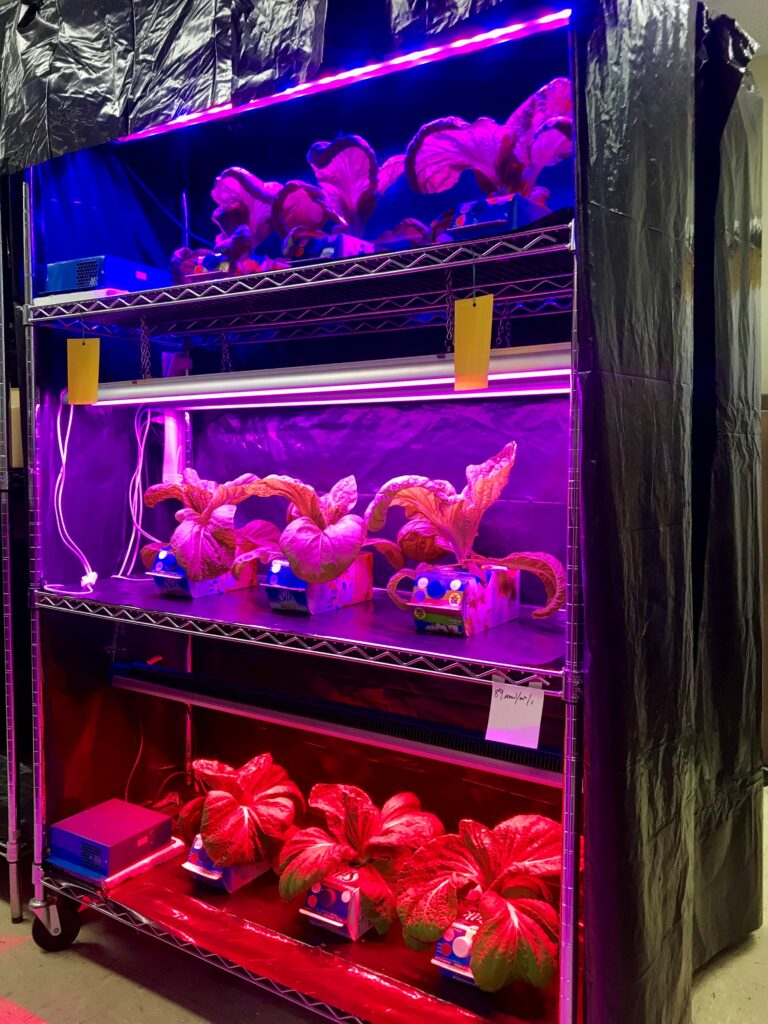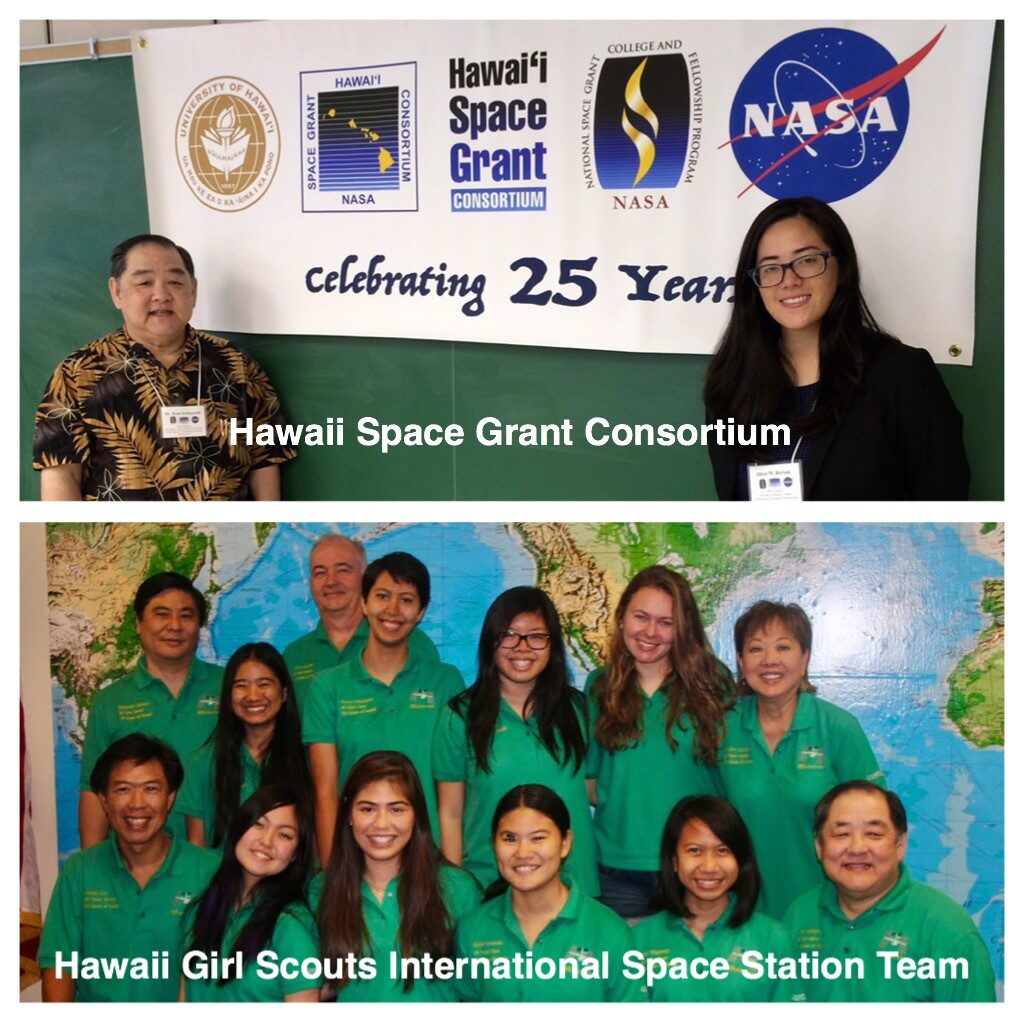As part of our ongoing series of interviews with astrobotanists, I sat down with Dr. Kent Kobayashi to discuss his career.

Decades ago, a young teenage boy crept into his aunts’ laundry room with a firecracker. He ran water into a sturdy concrete sink, filling it to the top. Carefully he cut a piece of scotch tape and folded it over the fuse of the firecracker, creating a tight seal. This was one of Kent Kobayashi’s first science experiments, and the first time he had ever tried making an underwater bomb. He lit the fuse and dropped the lit firecracker into the water, stepping back to make some distance. The firecracker exploded, but its effects were underwhelming, only loosening the rubber stopper at the bottom of the sink. A true scientist, Kobayashi ran his experiment again. To his horror, the second explosion was stronger than the first, splitting a large crack across his aunts’ concrete sink.
Dr. Kent Kobayashi has grown to be wiser in the decades since his first experiment, but he still exercises his curiosity today. Now an established researcher, he joined me on Zoom to share his experiences and life philosophies. He is charming and polite, with a soft voice and a penchant for telling humorous stories. He is quick to laugh, and seemed delighted to share his wisdom about life and about his experiences with astrobotany.
Dr. Kobayashi is a research scientist and an associate professor at the University of Hawai’i at Mānoa, and he is a Fellow of the American Society for Horticultural Science (ASHS). Though he is an ‘established’ researcher, he has had an atypical career, largely due to his insatiable curiosity. As a child he captured and raised insects, but during graduate school he came to realize that his love for insects was not enough for a lifelong career. He quickly pivoted from insects to agricultural weeds, where he suddenly was immersed in the study of plants. After graduation, his mentor asked him to join the horticulture PhD program at Oregon State University, and again Kobayashi had to learn many new things: how to do mathematical modeling and how to conduct experiments on plant dormancy and cold hardiness (something he never dealt with at his home in Hawai’i). Though these were difficult years, Kobayashi found joy in his exploration of new ideas, and his curiosity only grew.
After earning his PhD, Dr. Kobayashi became a researcher at the University of Hawai’i at Mānoa, where he still works today. Where many researchers focus on a specific crop for their whole career, Kobayashi enjoys exploring new ideas. He studied fruit trees for 20 years, then pivoted to orchids. His orchid research was especially novel: he wanted to discover how orchids grow and develop differently under different colors of light. He was curious about how the light color spectrum can be manipulated to improve orchid farming.
In the summer of 2007, Dr. Kobayashi’s research goals changed forever. He was attending the national American Society for Horticultural Sciences conference in Arizona when he reached out to Dr. Ray Wheeler, an astrobotanist at the Kennedy Space Center. To his delight, Dr. Wheeler invited him to a private tour of NASA’s crop production facilities the next year. Kobayashi vividly recalls the awe and excitement he felt, seeing the astrobotany experiments with colorful lights, complex hydroponics, and cutting-edge technology. This trip fueled his curiosity long after he returned to Hawai’i. He was captivated with the thought of space plant research, and he soon began conducting his own astrobotany research with leafy greens, hydroponics, and grow lights.

Alongside his astrobotany-related research Kobayashi enjoys exploring astrobotany with a diverse array of students. In 2013 and 2014 he mentored groups of high school girl scouts, who sent plant experiments to the International Space Station. He helped them design hydroponics systems to keep their plants alive in space—with the plants, lights, and hydroponics enclosed in a tiny capsule the size of a twinkie. He went on to mentor mechanical engineering college students as they built the BoxFarm, a growth chamber with a robotic arm designed to grow plants on Earth or on another planet. Kobayashi has also been conducting research with undergraduate students, with topics like using simulated Martian soil to grow crops, or using novel lighting techniques to grow plants more efficiently. With these projects he hopes to inspire young scientists to be curious about astrobotany, and he encourages them to continue exploring and thinking outside of the box.

Dr. Kobayashi smiles as he thinks back to the times when he started over: when he pivoted from insects to plants, from fruits to orchids, and from orchids to astrobotany. Exploring new topics fills him with the same joy he felt in graduate school—the excitement of trying new experiments, meeting new people, and exploring the things that spark his curiosity. Although he has come a long way since he cracked his aunts’ sink, his vibrant curiosity remains.
After we laughed together about his many stories and how far he has come, Dr. Kobayashi described his life philosophy. He smiled warmly as he told me:
In astrobotany, and in all other areas of your life, stay curious!
